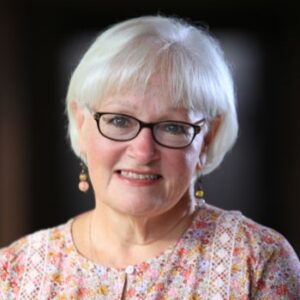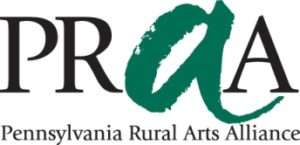Folkway Feature – Frances Halley
In our new series Folkway Feature, we take a closer look into the practitioners of folk & traditional arts in Western Pennsylvania. This series shares more about the work of artists featured in our Folk Artists Gallery. This article spotlights the art of papercutting and artist Frances Halley.
Get to know Frances Halley

Frances Halley is a graduate of the Art Institute of Pittsburgh and is a member of the Pittsburgh Society of Illustrators, the Folk Art Society of America and the Guild of American Papercutters. She has a particular interest in American Folk Art, both historically and as an artistic genre. Embrace the joy of folk art with Frances Halley!
- How do you define your art style? How did you learn?
This is a challenging question because I have never attempted to define my art style, so here goes. My style is definitely rooted in folk and ethnic art, which is tied to my love for history and culture. I absolutely love the detail, colors and patterns that are found in folk art. I love taking a common folk art subject, such as a bird or tulip and applying my own original patterns and detailing. It brings a charm and liveliness to the subject. The art history classes I took included very little about Folk Art as a separate genre. I have learned about it through a lot of reading and studying on my own. Particularly helpful to me has been the writing and art of Frances Lichten. I also enjoy creating art out of cut paper. Scissors and the X-Acto knife are my alternatives to pencil and paintbrush. While it can be a tedious process, the results are a beautiful combination of color and dimension. I consider myself a self taught artist in both of these styles.
- Why are you interested in the history and practice of American Folk Art?
I have always loved history, particularly Early American history and how it was influenced by waves of European immigration. In Pennsylvania, what h as come to be regarded as folk art pieces today were initially utilitarian household items embellished with beautiful patterns and ethnic designs. Some examples of these are decorated clay household utensils, butter molds, furniture, hope chests, coverlets, linens decorated with intricate embroidery and Fraktur documents commemorating significant life events such as marriages, births and educational achievements. There are some beautiful examples of all of these items at the Westmoreland Museum of American Art in Greensburg, PA. I think it is so important as folk artists to know and appreciate our history, the good and the bad. While we can certainly be proud of our history, we should also be humbled by it. My favorite historical authors are David McCullough and Nathaniel Philbrick. My personal library contains many of their books as well as a large volume of books on folk art. My absolute favorite book is Folk Art of Rural Pennsylvania by Frances Lichten, which was originally published in 1946. It is no longer in print but some existing copies can be found online.
as come to be regarded as folk art pieces today were initially utilitarian household items embellished with beautiful patterns and ethnic designs. Some examples of these are decorated clay household utensils, butter molds, furniture, hope chests, coverlets, linens decorated with intricate embroidery and Fraktur documents commemorating significant life events such as marriages, births and educational achievements. There are some beautiful examples of all of these items at the Westmoreland Museum of American Art in Greensburg, PA. I think it is so important as folk artists to know and appreciate our history, the good and the bad. While we can certainly be proud of our history, we should also be humbled by it. My favorite historical authors are David McCullough and Nathaniel Philbrick. My personal library contains many of their books as well as a large volume of books on folk art. My absolute favorite book is Folk Art of Rural Pennsylvania by Frances Lichten, which was originally published in 1946. It is no longer in print but some existing copies can be found online.
- What inspires your work?
There has been a growing interest in the accomplishments of self taught artists and I consider myself among one of them. I have been very much inspired by Anna Mary Robertson (Grandma) Moses. I taught a class on her life and work last fall at the Center for Lifelong Learning at LaRoche University. The class concluded with a trip to the Gatecrashers Exhibit at Westmoreland Museum of American Art. It featured many of her paintings among other self taught artists such as Horace Pippin and John Kane. All three faced significant physical and social challenges in their lives but eventually “crashed the gates” of what was in many ways an elitist art community.
- I understand that you spent most of your life working in the nursing field, and were unable to practice your art to the fullest extent. Does that influence your work now? How?
Yes, I have spent decades working in nursing and frankly, felt like a fish out of water. When you are an artistic person the desire to create preys on you like a wild beast. Eventually, the beast must be fed. In the early 90’s, when there were attempts to make changes in healthcare, jobs for nurses became very scarce. That was when I decided to go back to school at the Art Institute of Pittsburgh. I was in my early 40’s, had three young children and a part time job at UPMC Southside Hospital. Those two and a half years were challenging, but I felt like I was doing what I waited way too long to do. The beast was being fed, and I loved it.
- Do you have any advice for someone looking to step into an art practice?

If you love it, do it. Find your style, your audience and promote your work. It is extremely helpful in today’s market to be social media savvy, which is something I continue to find challenging. (I’m working on it!) I was very fortunate to be accepted as a member of the Pittsburgh Society of Illustrators in 2011. It has been a wonderful organization to be affiliated with both professionally and socially. I definitely recommend joining an active networking group for artists. I am also a member of the Folk Art Society of America and the Guild of American Papercutters. And above all, read! If you are inspired by the art or style of a particular artist, read their story, their history, their influences. Being awed by their stories can be as beneficial as being inspired by their body of work.
Recent News
- “Ways of Wood” Exhibition at The Artists Hand August 29, 2024
- Creative Health Impact Grant Open for the 2024-2025 Year April 22, 2024
- Folkway Feature – Meet the Artist Joe Grkman Jr. March 12, 2024
- Opportunities in the Arts Event December 1, 2023
- Quilting: A Strong-Held Tradition in Armstrong County September 8, 2023
